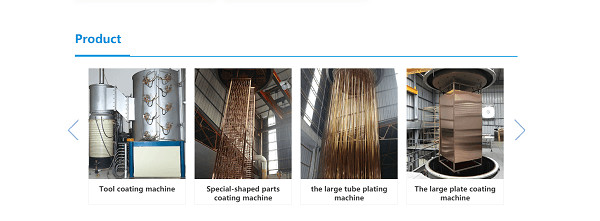LED chip manufacturing process
Vacuum coating machine LED chip manufacturing process, LED chip manufacturing process: epitaxial wafer → cleaning → transparent electrode layer plating → transparent electrode pattern lithography → corrosion → glue removal → platform pattern lithography → dry etching → glue removal → Annealing → SiO2 deposition → window pattern lithography → SiO2 corrosion → glue removal → N electrode pattern lithography → pre-cleaning → coating → peeling → annealing → P electrode pattern lithography → coating → peeling → grinding → cutting → chip → finished product test.
vacuum coating machine,pvd coating machine,pvd vacuum machine,vacuum ion coating machine,multi-arc ion coating machine
The LED production process of vacuum coating machine is divided into two parts. First, a gallium nitride (GaN)-based epitaxial wafer is fabricated on the substrate. This process is mainly completed in a metal organic chemical vapor deposition epitaxial furnace. After preparing the material sources and various high-purity gases required for the production of GaN-based epitaxial wafers, the epitaxial wafers can be gradually completed according to the requirements of the process. The commonly used substrates mainly include sapphire, silicon carbide and silicon substrates, as well as GaAs, AlN, ZnO and other materials. MOCVD uses gas-phase reactants (precursors), group III organometallics and group V NH3 to react on the surface of the substrate and deposit the desired products on the surface of the substrate. By controlling temperature, pressure, reactant concentration and type ratio, the quality of coating composition and crystal are controlled. MOCVD epitaxial furnace is the most commonly used equipment for making LED epitaxial wafers.
vacuum coating machine,pvd coating machine,pvd vacuum machine,vacuum ion coating machine,multi-arc ion coating machine
The next step is to process the two electrodes of the LED PN junction. Electrode processing is also a key process for making LED chips, including cleaning, evaporation, yellowing, chemical etching, fusion, and grinding; then the substrate is diced, tested, and By sorting, the required LED chips can be obtained. If the wafer is not cleaned enough, and the evaporation system is abnormal, the metal layer (referring to the electrode after etching) will fall off, the appearance of the metal layer will change, and the gold bubble will be abnormal. During the evaporation process, spring clips are sometimes needed to fix the wafers, so pinch marks (which must be removed during visual inspection) are generated. The yellow light operation includes baking, photoresist, photographic exposure, development, etc. If the development is not complete and the photomask has holes, there will be more metal in the light-emitting area. In the front-end process of the wafer, various processes such as cleaning, evaporation, yellowing, chemical etching, fusion, grinding, etc. must use tweezers, flower baskets, and carriers. Therefore, scratches on the die electrode may occur.



